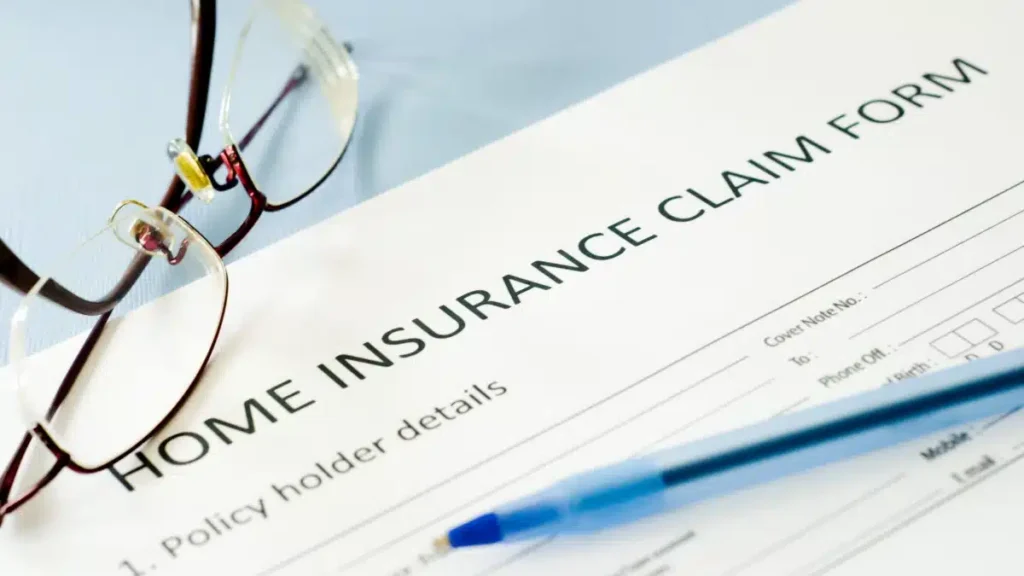
Experiencing damages or loss to your mobile home due to fire, theft, or storm can be quite overwhelming, and dealing with the aftermath can be quite tough. Filing an insurance claim becomes a natural first step in dealing with such an incident. However, the claims process may be intimidating to people who have never had to do it before. That’s why this guide was created: to walk mobile homeowners through the processes in such a way that it does not feel like it is too much of a hassle. To assist you in the claims filing process, we aim to provide you with the most important pieces of information needed to not run into any issues during the whole process and to deal with your claim quickly.
Insurance Documents for Mobile Home:
Before even filing a claim, one should be well aware of the mobile home policy they have for insurance. These policies highlight damages that can be claimed as well as those that can’t make the later part of the process a lot easier and less problematic.
Fire, theft, storm vandalism, and falling objects are examples of events that are specific and usually cause destruction; these destruction events are usually covered in most mobile home insurance. Also, note that liability coverage is not included in a lot of policies when a person has an injury on your premises. There are quite a few, however, like floods and earthquakes, which are not standard policy terms but rather separate ones.
A good and wise approach toward your property insurance includes familiarizing yourself with the policy, so check and understand your coverage limits, deductibles, and additional riders. With this information at hand, one will have reasonable expectations of what can be claimed when a problem arises.
Preparing to File a Claim: Additional Documentation and Evidence
When dealing with filing an insurance claim of this nature, the entire process becomes much easier if adequate preparation is done beforehand. The absence of adequate documentation for any claim being made will only delay, or worse, policy or payment denial.
Begin by getting a good look at the damage and recording it. In this case, take a bunch of photos and videos of the damaged areas, making sure to do so as close-up or wide-angle shots where everything is visible. Create a comprehensive list of all damaged or burned-out items, including their values dates purchased, and any third-party receipts they may have been bought from.
Always put a time-applicable focus on reconciling and maintaining records for temporary measures. Make sure to do this when, for instance, patching a roof is needed. In any eventuality, though, do not touch a permanent measure until a proper evaluation has been conducted by the insurance adjuster.
Moreover, do not forget to secure other supporting documents, such as your previous inspection or maintenance report or even the insurance policy itself. The presence of these documents will make the filing process orderly and cheap.
Filing the Claim: Step-by-Step Process
The next stage of the procedure is the presentation of the claim after all relevant evidence has been collected. In an insurance process, almost all the processes unfold in such a way:
Notify Your Insurance Company: Sometimes, it is extremely necessary to inform the insurance provider regarding the exact circumstances of the event in time. These are generally made available through a hotline or an online account.
Explain What Happened During the Incident: Describe the main aspects of the situation, including the exact time, date, and cause of the damage or loss. Making sure you provide as much information as possible will help avoid problems later on.
Provide Documentation: Provide all materials you gathered as evidence (photos, videos, itemized lists, and receipts), either through the web portal or through email.
Claim Number: After the claim is authorized by an insurer, she assigns a claim number to you. Please keep it safe and handy, because the number will help in identifying the movement of your claim.
Communication: Responses were collected through the insurance company and members of the general public through regular communication and a quick grab of telephones when most information was required.
Document the date, time, and insurance officer’s name and matters that you spoke about because you must keep records of all communication made with an insurance company.
Working with Claims Adjusters: The Process and Your Expectations
Managing insurance claims takes a lot of struggle, the first thing being assigning the claims adjuster. After assigning a request, he or she will be in charge of evaluating the set claims made after an incident, along with seeing the payout requested, if it meets the satisfaction of compensation owed to the other party. Having this knowledge will allow you to communicate thoroughly with the claims adjuster.
Every field professional/actuary is required to assess the mobile home along with the damage covered. During the process of examination, queries related to the incident claimed will be formulated, and hearings will take place, with possible images being recorded too. Therefore, one must abide by facts without adding in truthful claims or alluding to possible causes of the damages inflicted—everything should be in respect to what was granted pre-claims.
And lastly, to improve the rate of time, simply guiding the claims actuary as to where they could miss relevant damages would cut down on unnecessary walks in the restorative claim. To cut time down even more, referring documents during evaluation would save time.
This evaluation will lead up to the next step, after which the final amount owed or paid will be discussed. The remaining balance is evasively outlined to the insurer, tagged along with the reminder-voted claim being activated through signing.
Common Mistakes to Avoid While Claim Filing:
The claim filing process can become quite tricky for individuals dealing with it for the first time. Most of the time, it is the minute details that get overlooked, which causes unnecessary concerns or, in certain situations, rejection of the claim altogether. Here are the common mistakes people want to avoid making while filing a claim for an insurance policy:
Delaying in Filing the Report: Insurance companies operate within a timeframe in which they expect the claims to be registered. So, it is quite certain that a little delay in this process can turn the entire situation upside down.
Failing To Go Through The Policy: It would certainly not be a good idea to apply for damages that are not covered by your policy, as this could potentially end in a massive loss of time as well as frustration.
Missing Documentation: Certain documents cross-reference each other and therefore make the reading of the claim much clearer. For example, in some instances, missing out on a few photos, receipts, or proof of ownership could make your submission ambivalent, thereby worsening your case.
Taking Final Steps Before The Insurance Adjuster Inspects: An insurance adjuster fully evaluates and determines the extent of the damage so undertaking repairs without the adjuster arriving could create mistrust about the estimate.
Overlooking Certain Damages While Filing The Claim: The last thing that anyone would want is to receive a lesser settlement than they should have, so make sure you keep all damages in conclusion.
All in all, if these simple mistakes are avoided and a proper filing of the documents is done along with proper structure, there are high chances of smooth and proper completion of the claim process.
Advice for Making a Successful Claim on Mobile Home Insurance:
Start by saying that for someone to be able to file this particular claim, they would need to have the necessary documentation required, and this documentation also needs to be provided to your respective service provider. Furthermore, you should know this type of home is more sensitive since it’s comprised of protective layers and ribbed fortification. All in all, it does not have to be an intimidating process. This means that the individual should be more relaxed while proceeding with the process of filing this claim.
Such a claim, which is filled out the right way, will help a lot while the individual is trying to get their lives back on the right track whenever a life incident takes place. Therefore, that is why following such a guide becomes a necessity so that the claimant is filled with the right knowledge as well as the tools in order to file a claim that is successful.
FAQs:
1. How long does it take to process an insurance claim for a mobile home?
You should wait between 1 and 4 weeks to process your claim. In some cases, claims can take longer to process, particularly if the upfront paperwork needs extra documentation.
2. Will my premium increase after filing a claim?
It’s reasonable to think so, as several insurers might change your premium after making a claim. This depends upon the number and kind of claims that are made.
3. What if the adjuster denies my claim?
Every claim that is filed has supporting evidence. If you feel that your claim and all accompanying documents are properly submitted, then you are within your rights to make an appeal for the adjusting decision.
4. Can I handle the claims process on my own?
Primarily yes, but many homeowners decide to use a public adjuster or an attorney for consolidating due to the complexity of the claims or their value.
5. Is every kind of damage to a mobile home covered by insurance?
No, for instance, floods, earthquakes, and wear along with wear might not always be included in the policy and may have to be purchased independently; hence, it is important to check what your policy entails.
